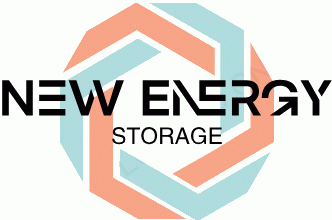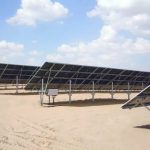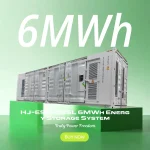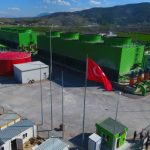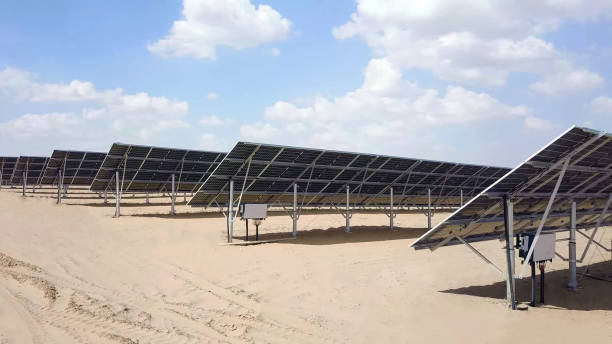Saudi Arabia’s Green Energy Strategy in recent years has boldly aimed to achieve 50 percent of the kingdom’s energy from renewable sources by 2030 with a capacity target of 130 GW—58.7 GW of solar and 40 GW of wind power—under its Vision 2030 program. To support this record deployment, the kingdom is adding one of the world’s biggest grid-scale battery energy storage systems (BESS), including a 2.5 GW/10 GWh facility and an independent 2 GWh facility from BYD, which will mitigate intermittency and allow for peak-shaving, frequency regulation, and renewable firming. But as Integration and Challenges of Energy Storage Systems become a reality—record-high installation costs, land constraints, desert heat record highs, and regulatory changes—the demand for innovative solutions grows ever more necessary. In the meantime, hybrid technologies and modular technology, such as pumped hydro with lithium batteries and future EcoCharger-360 Series, seem set to level space and climate challenges and deliver maximum dispatchability.
Audience and Content Analysis
This article is written particularly for four vast constituencies: energy policy-makers, infrastructure investors, project developers, and renewable-energy consultants who are seeking a particular value from content on Saudi Arabia’s Green Energy Strategy. Energy policy-makers need detailed examination of regulatory regimes, subsidy mechanisms, and market structures for policy advice in line with best practice internationally and domestic experience. Quantitative data—LCOS, estimates of IRR, and revenue-stacking analysis—are needed by infrastructure investors to estimate risk-adjusted returns on long-duration storage projects. Such technical detail as round-trip efficiency measures, thermal management systems for desert operations, and compliance with UL 9540A safety standards is what project developers are looking for. Renewable energy consultants must embark on Integration and Challenges of Energy Storage Systems at a deep level, into the hybrid storage implementations, EMS systems built using AI, and orchestration for VPP. Engaging readers will require tone falling between technobabble and narratives—a use of analogy or rhetorical question, like a BESS module described as electronic “sand dams” in order to amass sunlight eventually to disperse. Anecdotes and project spotlights—such as NEOM’s Sungrow-BYD battery factory—illustrate actual uses, while bulleted lists and chunked subheadings allow for scannability. SEO optimization—organic incorporation of Saudi Arabia’s Green Energy Strategy as a keyword, semantic keywords, and strategic use of H2/H3—ensure search engine visibility and intent matching. As SEO best practice from existing industry research suggests, the text uses long-tail terms like “hybrid energy storage in desert environments” and “operation of EcoCharger-360 Series” to capture long-tail searches. In doing so, the article provides algorithmic ranking signals and real-world information for Saudi Arabian stakeholders involved in its energy revolution.
Setting the Stage: Saudi Arabia’s Green Energy Strategy
Since the launch of Vision 2030, Saudi Arabia has been working on reshaping a transition away from oil-driven generation to renewables. The kingdom is heading towards net-zero by 2060 and will procure 20 GW of solar and wind capacity every year, peaking at 100–130 GW in 2030. Main points are:
- Big-ticket solar PV tenders allocating 3.7 GW of schemes to EDF Renewables and TotalEnergies under 25-year PPAs.
- The Saudi–Australia Power Link, a 1.75 GW subsea power cable to supply solar power to the country subject to EMA approval.
- Off-grid renewables and BESS powering Red Sea Global resort’s tourist areas completely with clean energy.
Integrating Storage: Integration and Challenges of Energy Storage Systems
Grid-Scale Deployments
- 5 GW/10 GWh BESS:April 2025 SEC deal between BYD and Alfanar for five 500 MW/2 GWh sites, one of the world’s largest single-venue storage schemes.
- 2 GWh BYD-Supplied BESS:The January 2025 handover uses 122 pre-assembled cabinets to stabilize the desert grid, suppressing sandstorm and heat problems through specialist enclosures and cooling regimes.
Regulatory and Market Challenges
- Sophistication in the Tender Process: The EMA’s first 8 GWh storage tender was foreign bidders’ pre-qualification, yet varying technical specs and UL 9540A fire-safety requirements add sophistication to project delivery
Energy-Storage.News.
- Cost Pressure: Though lowering battery expense, storage capex is far from trivial. Saudi pumped hydro bid levelized costs of USD 23–45/MWh estimate comparison to solar but also include seasonal deployment adjustments.
Technology Insight: Saudi Arabia’s Hybrid Energy Storage
Hybrid systems are gaining popularity increasingly to balance day and season variability:
- Seasonal Pumped Hydro + BESS:Studies show that coupling seawater-based pumped hydro in mountain valleys with arrays of batteries can even out desalination loads and solar peaks with more than 70 percent round-trip efficiency.
- NEOM’s Stunning Smart-City Pipeline:The NEOM leverages over 16 GWh of BESS in the works, BYD and Sungrow lithium-ion technology, and high-temperature redox flow batteries to enable necessary resilience.
- ACWA Power Gigafactory Platform Support:A joint venture with Gotion Power will pair 500 MW of wind energy with a 2 GWh BESS to power its region’s first battery “gigafactory” pairing reduced production with storage demand.
Highlighting EcoCharger-360 Series
The EcoCharger-360 Series revolutionizes containerized dry storage for land-constrained sites:
- Modular Cabinet Design:Stacked up to 8 MWh, with HVAC integrated and sandproof seals for desert climate reliability.
- Smart Energy Management: AI-driven dispatch optimizes arbitrage, peak-shaving, and renewable firming using real-time analysis.
- Safety and Compliance:Pre-certified to UL 9540A and NFPA 855 standards, reducing permitting timelines.
Applications range from oil & gas plant micro-grid backup to national frequency market VPP participation and community solar-plus-storage schemes.
Anecdotes, Insights, and a Dash of Humor
You might ask: “Do batteries turn the switch on a petrostate’s habit of consumption?” With Saudi, they are doing precisely that—megawatt-hour by megawatt-hour. I spoke with an engineer who downplayed the situation and characterized battery cabinets in the desert as being akin to “giant, power-banked camels” ready to transport solar power into the evening. But there is a bit of truth in the joke: storage is the quiet hero that allows renewables to act like good old baseload generators.
Scaling storage is not a technical challenge but a culture shift—moving from boundless fuel reserves to charge cycle constrictions. But with each megawatt of grid capacity, Saudi Arabia is moving towards a world where the sun, and not oil, powers both the megacity and the mettle of its energy policy.
